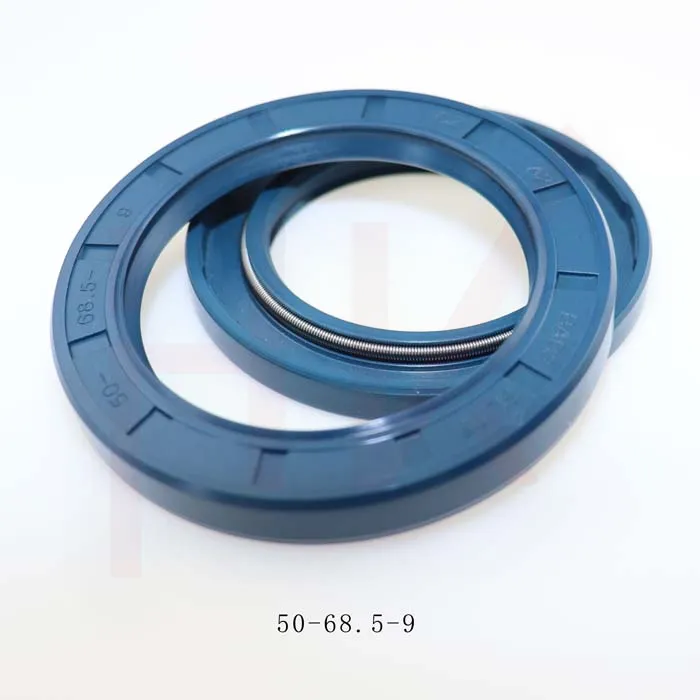nóv . 12, 2024 01:23 Back to list
front wheel oil seal
Understanding Front Wheel Oil Seals Importance, Function, and Maintenance
The front wheel oil seal is an essential component in automotive engineering that plays a crucial role in maintaining the efficiency and longevity of a vehicle's wheels and overall performance. Often overlooked in routine car maintenance discussions, the oil seal is critical for ensuring that the lubrication system operates effectively, preventing costly repairs down the line.
What is a Front Wheel Oil Seal?
A front wheel oil seal functions similarly to a gasket. It is designed to retain the lubricant within the wheel assembly while preventing contaminants, dust, and water from entering the system. Typically made from durable materials such as rubber or synthetic compounds, these seals are engineered to withstand considerable pressure and temperature fluctuations.
The primary job of the oil seal is to create a barrier that keeps the oil in place while allowing the axle to rotate freely. This is especially important in vehicles where the front wheels are responsible for steering and providing traction. If the seal fails, oil leaks can occur, compromising lubrication and potentially leading to more severe mechanical issues.
Importance of Oil Seals in Vehicle Performance
The significance of oil seals cannot be overstated. When lubricants are contained within the wheel assembly, they lubricate essential components like bearings and gears, reducing friction and wear. This in turn enhances the performance of the vehicle, improving fuel efficiency and extending the life of crucial parts.
Furthermore, a good oil seal mitigates the risk of mechanical failure associated with dry or damaged components. Without sufficient lubrication, parts can overheat or suffer from metal-to-metal contact, leading to inefficient operation and, ultimately, potential breakdowns. Regularly checking and maintaining these seals can save drivers considerable time and money by avoiding severe mechanical faults.
front wheel oil seal

Signs of Worn or Damaged Oil Seals
Several indicators can signal that the front wheel oil seals may be wearing out or failing. A common sign is the presence of oil leaks around the wheel hub area. Drivers might notice oil spots on the ground where they park, or may notice an oily residue on the wheels themselves.
Additionally, if a driver experiences unusual noise coming from the wheel area, it could indicate that the lubrication is compromised. Grinding or whining sounds might suggest that the bearings are suffering due to inadequate lubrication. In such cases, immediate inspection and replacement of the oil seals is advisable to prevent further damage.
Maintenance and Replacement
To avoid issues with front wheel oil seals, preventative maintenance is key. Regular inspections of the wheels and undercarriage during routine vehicle servicing can help identify signs of oil leakage or wear early on. If any leaks or signs of damage are detected, it is important to consult a mechanic promptly.
The replacement of oil seals is not a particularly extensive or expensive procedure, making it feasible for most car owners to address promptly. During replacement, mechanics will typically clean the area to ensure that no contaminants are present, which helps in forming a strong seal. It’s vital to use high-quality, compatible seals to ensure the best fit and longevity.
Conclusion
In summary, front wheel oil seals may be small components, but their importance in the overall function of vehicles is substantial. They are crucial in maintaining the integrity of the lubrication system, which directly affects vehicle performance, reliability, and safety. By understanding the role of these seals and keeping an eye out for potential issues, vehicle owners can ensure their cars remain in good working order, ultimately leading to a safer and more enjoyable driving experience. Regular maintenance and prompt attention to any signs of wear will keep both your oil seals and your vehicle running smoothly for years to come.
-
The Trans-formative Journey of Wheel Hub Oil Seals
NewsJun.06,2025
-
Graphene-Enhanced Oil Seals: Revolutionizing High-Pressure Oil Sealing
NewsJun.06,2025
-
Future of Hydraulic Sealing: Advanced Intelligent TCN Oil Seals
NewsJun.06,2025
-
Don’t Let a Broken TCV Oil Seal Ruin Your Day
NewsJun.06,2025
-
Bio-Inspired Dust Seals for Better Sealing Performance
NewsJun.06,2025
-
Biodegradable and Sustainable Hydraulic Seal Materials
NewsJun.06,2025
-
Top Oil Seal Solutions for Your Industrial Needs
NewsMay.22,2025
Products categories
















